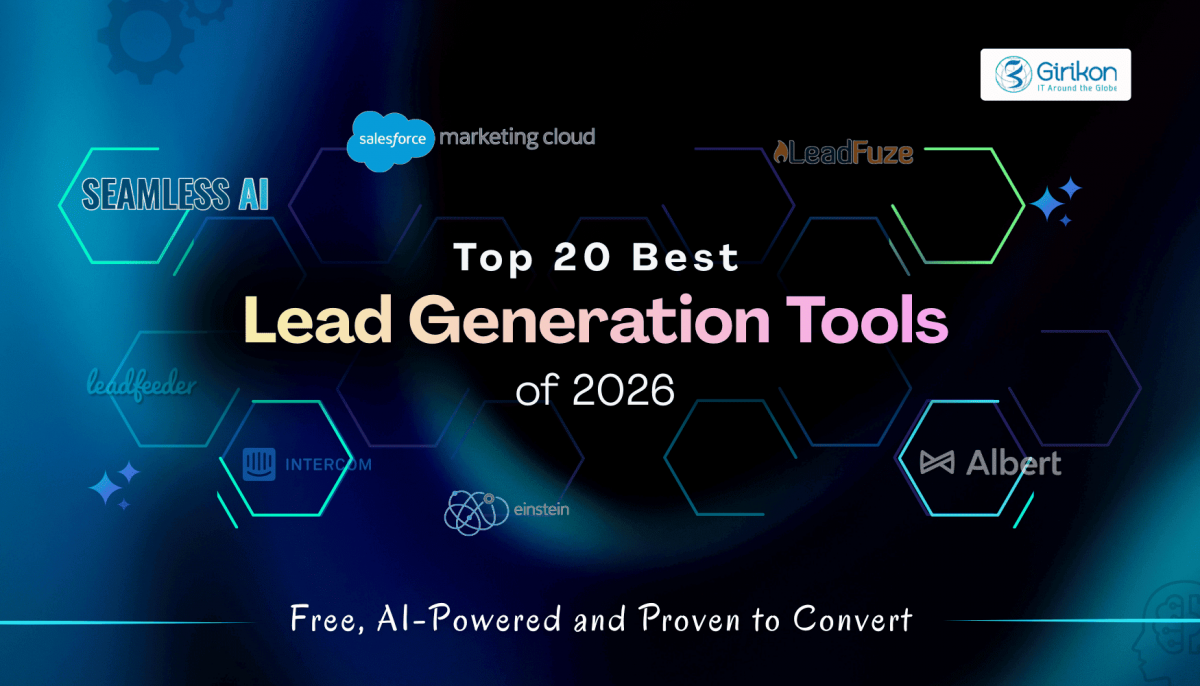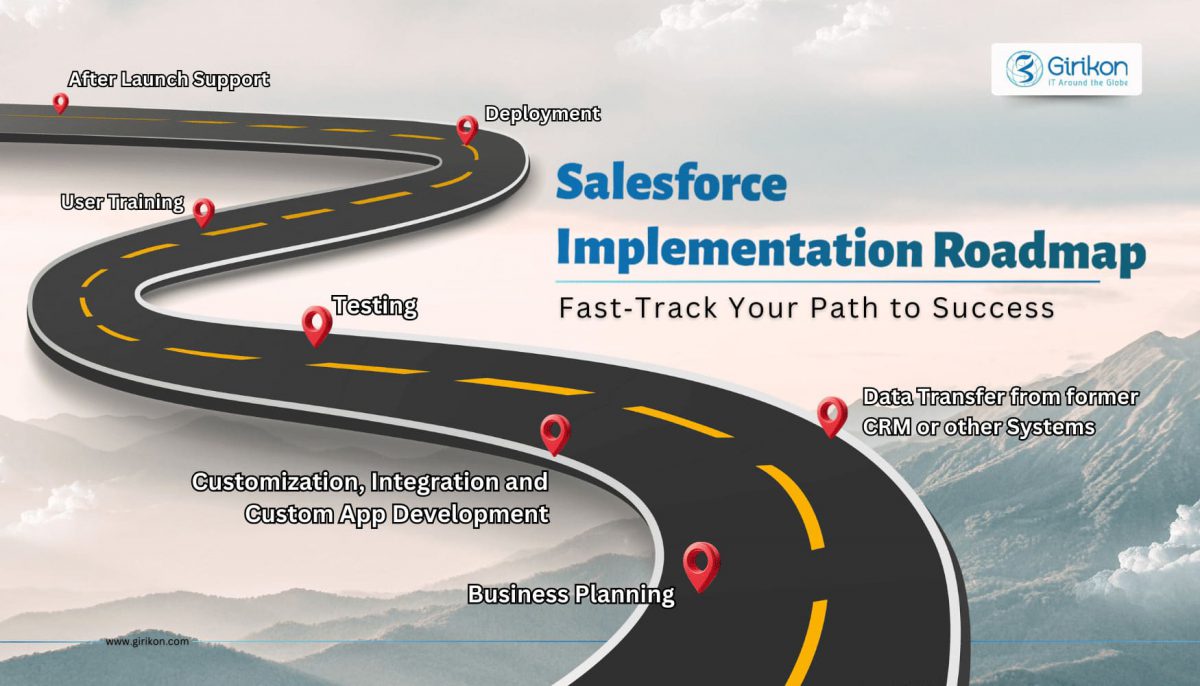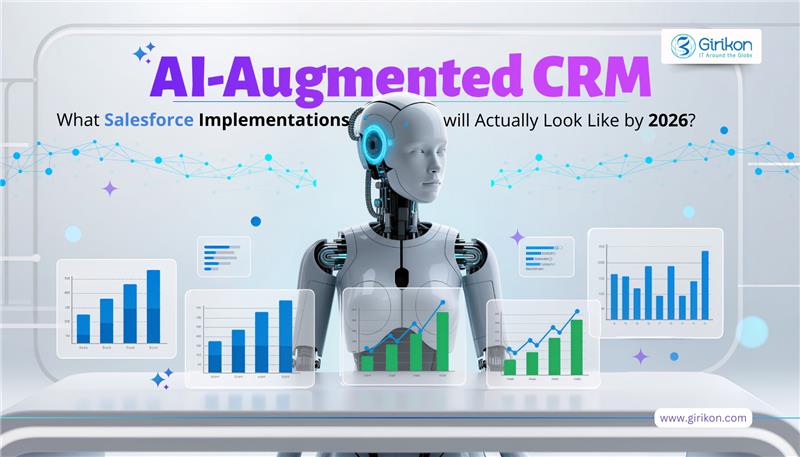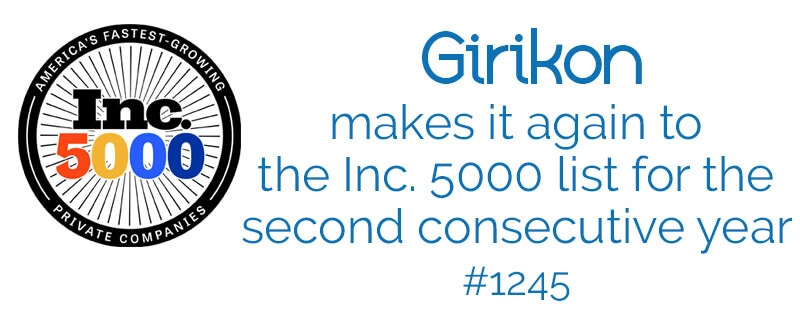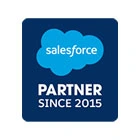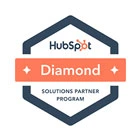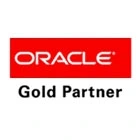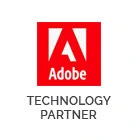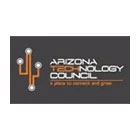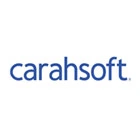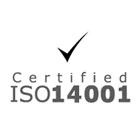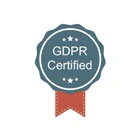CRM (Customer Relationship Management) systems have significantly transformed how businesses connect with their audiences. Besides being a single source of customer data, a robust CRM analyzes data and automates mundane tasks. However, modern CRMs have AI integrated within their fabric and have become the keystone for businesses pursuing data-informed strategies. However, in this race towards digital transformation, its effect on humans is getting overlooked. Though the analytical potential of AI is massive, its full potential can only be realized when it is aligned with human creativity, insight, and principles. This synergism positions ingenuity at the forefront of technological progression, paving the way for pioneering heights of innovation and understanding.
Research conducted reveal that a significant percentage of IT leaders have integrated AI into their developmental processes. In fact, the demand for AI-powered solutions has reached an all-time high, with tools such as Einstein GPT, intelligent automation, and more reshaping the CRM landscape. Yet in this ever-evolving business landscape, AI besides automating mundane tasks, challenges developers to scale up while remaining relevant. The convergence of AI and development raises a gripping question: Are AI tools potentially a threat to developers, or do they open a gateway to matchless opportunities? Let’s discover how AI is reorganizing the roles, skills, and contributions made by Salesforce Consultants in today’s era.
AI in Salesforce
Salesforce has cemented its position as a pioneer in using artificial intelligence to transform customer relationship management (CRM). With innovations like Einstein GPT—the world’s first generative AI for CRM—Salesforce enables businesses to craft personalized customer experiences. But what does this evolution mean for developers?
AI in Salesforce extends far beyond basic automation and includes key capabilities such as
Einstein GPT and AI Cloud: Provides predictive insights through data analysis.
Automated Code Generation: Supports developers by generating (Apex or Visualforce) code.
Workflow Optimization: Automate routine tasks and enable developers to focus on strategic tasks.
Though these improvements highlight the value AI brings to businesses, they also spark a debate about the changing role of developers. Businesses should hire a certified Salesforce Partner to unlock the full potential of Salesforce AI. Is AI set to take over tasks traditionally handled by developers, or will it enhance their efficiency and strategic impact?
Is AI posing a Threat to Developers?
With AI being integrated into Salesforce rapidly, developers are at risk of losing their jobs and the prolixity of their skills. Listed below are some challenges that make AI seem like a threat:
Automation of Mundane Tasks: Several AI-enabled tools such as Einstein GPT can be leveraged to automate routine tasks such as debugging, creating workflows and more. This does away with the need for human intervention in responsibilities that were once a crucial aspect of a developer’s role.
Low Demand for Tailored Solutions: With AI creating ready-to-implement solutions for tasks such as customer segmentation and more, the dependence on custom development is reduced significantly. With this, the demand for developers with expertise in customization might take a backseat.
The Learning Curve: To match the growing pace at which AI is advancing, developers must upskill to match up. However, learning AI-based technologies that too on a regular basis can be overwhelming.
Evolving Skill Priorities: Traditional skills such as Apex no longer suffice the purpose on their own. Consequently, businesses are engaging developers have the capability to integrate AI tools while harnessing the power of machine learning algorithms. This shift is creating a sense of unpredictability for developers whose expertise has not yet scaled to meet these evolving demands.
While the concerns are rational, they represent only one side of the picture. It's equally important to shift our focus to the opportunities AI is creating and are leveraged by developers to sustain their career.
How is AI Empowering Developers?
Rather than ripping apart the confidence of developers, AI is emerging as a powerful partner for those ready to evolve. Here’s how developers can harness AI:
Boosted Productivity: AI tools streamline time-consuming tasks such as testing, deployment, and bug fixing. Take Einstein GPT, for instance—it can generate test scripts automatically, allowing developers to dedicate more time to high-value, creative aspects of application development.
Broadening Career Prospects: The growth of AI is unveiling new possibilities for building AI-driven applications and crafting custom machine-learning models tailored for Salesforce clients. Developers with expertise in AI integration are in high demand, positioning them as major contributors in this rapidly evolving ecosystem.
Becoming Future Ready: AI provides developers with the much-required impulse to learn new technologies such as Machine learning, analytics and more. By upskilling themselves, these skills not just make them future ready but also empower them to unlock opportunities in AI-driven development and data science.
Driving Innovation: AI could never replace human creativity – it can only augment it. By automating redundant tasks, AI enables developers to use their creativity to develop innovative solutions, which AI cannot attain exclusively.
Demystifying the Myths – AI (a threat or an Opportunity)
To navigate the fears of AI taking over jobs, developers must shift their focus to enhancing their skills. Organizations too must invest in training programs that empower teams to confidently handle AI technologies. This includes understanding how AI tools function, interpreting their outputs, and using those insights to make informed decisions. The actual strength of AI lies in its role as a partner in innovation, not a replacement for human intelligence. By leveraging the power of AI and human intelligence, businesses can ease concerns around AI. With AI managing redundant activities, Salesforce Consulting Partners can focus on delivering transformative solutions.
Digital transformation has not just transformed the way organizations conduct their business but also how people interact with businesses. With organizations and customers increasingly entrusting sensitive data to digital systems, the need for creating a robust cybersecurity strategy has never been greater. Besides data protection, reliable cybersecurity measures ensure the safety of services that fuel innumerable lives. In today's constantly evolving landscape, organizations face a critical challenge of safeguarding their critical assets. This is where AI emerge as a potent solution. By harnessing the power of AI in cybersecurity, the ongoing struggle faced by businesses in detecting threat posed by malicious actors is simplified.
Salesforce – a leading name in the cloud-based CRM space and enterprise AI, has made data security a foundational element of its AI strategy. By introducing automation, predictive analytics, and intelligent decision-making across its platform, Salesforce optimizes its security framework to protect sensitive data. Its security-first approach enables businesses to embrace AI while following strict compliance standards. It makes sense to associate with a certified Salesforce Consultant.
Leveraging Security First AI-strategy of Salesforce
As adoption of AI accelerates, the demand for a powerful security framework to counter evolving threats becomes increasingly critical. Salesforce has designed its AI ecosystem with security at its foundation, allowing businesses to harness AI-driven insights while upholding data integrity and ensuring compliance. Hyperforce – a next-gen cloud architecture of Salesforce and the cornerstone of the platform’s security first strategy offers increased security and scalability to protect customer data. Such an arrangement is beneficial for businesses that are subject to stringent data regulations and rigorous privacy mandates. Just like another crucial element of the platform’s security first approach is its Zero Trust Security model.
This model shifts from traditional trust conventions to a framework of continuous verification. Rather than depending on location or prior access, the Zero Trust model enforces strict identity checks and real-time monitoring at every access point. This stops unauthorized access, reduce insider threats, and secure data—even in highly automated, AI-driven environments. By embedding these security fundamentals into its AI-powered solutions, Salesforce enables businesses with a secure foundation to harness AI while reducing risks.
Key Features of Salesforce’s AI-driven Strategy
To detect threats while ensuring protection of data and regulatory compliance, Salesforce utilizes AI-powered advanced security mechanisms. Businesses can leverage AI without compromising on data security due its multi-layered approach:
Intelligent Threat Detection and Response with AI: Salesforce harnesses Einstein AI for to continuously monitor system activity and sense potential threats. By assessing user behavior, this robust platform can detect unusual patterns including unauthorized access or abnormal extraction of data to notify security teams in real time. Apart from this, assessing risk by harnessing the power of AI enable businesses to identify and address those risks by strengthening their defenses before any security breach occurs.
Data Encryption: In the event of a security breach, Salesforce ensures protection of sensitive information by encrypting data bot at rest and during transit. For organizations looking to add an additional layer of security, the BYOK (Bring Your Own Key) option enables them to get a greater control. Salesforce also imposes the Multi-Factor Authentication (MFA) to strengthen access security thereby minimizing the risk of unsanctioned logins while ensuring access of critical data to verified users only.
Identity and Access Management (IAM): By employing access controls that are based on roles, Salesforce ensures that users could only access information relevant to their role. This approach limits the exposure of sensitive data only to authorized users thereby significantly reducing the risk of sensitive data. By fine-tuning authentication protocols based on real-time risk assessment, AI-driven authentication fortifies protection. Extra verification steps must be followed when unauthorized log in attempts happen thereby preventing fraud and unauthorized access.
Regulatory Compliance: Salesforce help organizations ensure strict adherence to data privacy laws as its architecture is designed keeping compliance in mind. For businesses that are a part of highly regulated industries Salesforce offers tools for event monitoring and audit trails. This enables businesses to spot security glitches if any. Salesforce also offers data residency options that empower businesses to manage data within definite geographic locations, which ensures compliance with regular local regulations. These AI-powered features enable businesses to leverage the AI while ensure strict compliance to regulatory guidelines.
What are the Best Practices to Strengthen AI Security
Organizations should implement some practical measures to augment the security of AI-powered operations, which ensures data integrity, detect threats and ensures compliance. Listed below are some key best practices:
Using Salesforce Shield for Implementing Custom Security Policies: Organizations should leverage Salesforce shield as it offers numerous security tools such as field audit trails, platform encryption and more. These security tools help businesses implement custom security policies to outline data access rules, keep a track of high-risk activities and impose regulatory compliance. By modifying the security settings as per the unique needs of an organization, it becomes easy for organizations to strengthen protection against AI-driven threats.
Enable Anomaly Detection: AI-powered security tools offered by Salesforce can identify activities such as unauthorized login attempts and more. To augment security, organizations should activate real-time alerts for immediate notifications of any suspicious behavior. Implementing automated anomaly detection further strengthens defenses by spotting potential threats early, allowing proactive measures before issues escalate.
Why Avail Salesforce Consulting Services?
Implementing AI-enabled security within Salesforce CRM requires strategic approach tailored to meet the unique needs of your business. To make the most of these security tools, businesses should consider getting in touch with an expert who can also help in detecting threat and ensuring compliance. Besides tailoring security policies as per the unique needs of a business, a Salesforce Implementation Partner also optimizes AI-driven security features. They can also assist in ensuring seamless integration with existing IT frameworks besides providing ongoing support and training.
Final Words:
Ensuring data security and integrity has become all the more crucial in today's AI-driven era. As a robust CRM, Salesforce empowers organizations with its security-first framework to harness the power of AI to protect customer data from threats. For organizations that are a part of highly regulated sectors, Salesforce offers in-built tools that offer a strong podium for security. To make the most of these capabilities, it makes sense to get in touch with one of the best Salesforce Consultants.
Imagine reaching your potential customers one by one—without the need for manual dialing. That's the power of Salesforce CTI, which automates the dialing process and seamlessly connects with your CRM to streamline communication and enhance interaction. As part of the world’s no. 1 CRM system, CTI facilitates seamless data exchange between computers, phones, and other core systems.
This is how it transforms phone conversations into valuable data. There is much more to learn about how you can leverage Salesforce CTI to its full potential. Let’s dive into this guide and explore A to Z of Salesforce CTI.
What is Salesforce CTI? Explained
Salesforce CTI is a computer telephony integration system that users can access only inside Salesforce. While Salesforce allows to capture every inbound, outbound, and other essential data about the call, CTI enables making and receiving calls from the software itself. That’s how it is named Salesforce CTI.
No matter if any call center wants to make hundreds or even thousands of calls per day, the innovative integration makes a big difference in performance and efficiency.
Business Benefits of Using a Salesforce CTI
Investing in time-saving tools is what proves essential for businesses which are looking to reduce costs and enhance team productivity. Guess what? With Salesforce CTI integration, businesses achieve this as it cuts down on redundant tasks like manually entering information twice into both your IP telephony system and CRM. Here is more that the solution provides to businesses worldwide.
Lesser Manual Tasks
With technologies like Salesforce CTI automating more and more these days, tedious administrative tasks are becoming a thing of the past. When dialing a phone number manually used to be inefficient, Salesforce CTI has transformed it into a seamless, efficient process with its click-to-call feature. Using the feature, employees can easily make contacts by simply clicking on the name.
Moreover, they can leverage call campaign and auto dialing features to easily navigate through the outreach. The best part? The software automatically updates phone contacts without you handling it manually. Thus, saving your energy and letting your team access the same information in real-time. In short, the convenience of using telephony and CRM together eliminates the need to toggle between multiple tools.
Optimized Customer Service
The major challenge that call centers often face is ensuring continuity of service. This obstacle becomes even more significant during unexpected system disruptions and high volumes of customer interactions. CTI helps resolve this with voicemails, automatically recording messages to maintain the continuity of service and ensuring no customer communication is lost. Moreover, CTI systems come with in-built failover mechanisms. This ensures that calls are redirected to the backup system when one part of the telephony system goes down.
Other than this, the best CTI for Salesforce, GirikCTI offers screen pop that shows up the contact information and caller details. Upon taking a glance at this information, you can facilitate a higher level of personalization. During events, when a new employee in need for training, you can roll out call whisper feature and coach your agents in real-time. With such features available, you can easily optimize customer service to a whole new level.
Efficient Call Management
What level of call flow you maintain has a huge influence on your call center, i.e., it can sink and sail your operation. Salesforce CTI automates key aspects of call management such as call routing, data entry, and tracking. This way it ensures that calls are directed to the right agent, minimizing wait times and preventing call congestion. Besides, the system’s monitoring features help in assessing call volumes, agent availability, and average wait times.
Thus, enabling team members to ensure proactive precautions in staffing or routing for optimal call flow. What’s more, with an interactive voice response menu (IVR), customers or callers can easily direct their calls to the team or representative who can best help them. Lastly, there is a power dialer which makes moving through your contact list when you need to crank out the phone calls.
Analytics Dashboard
No matter which software you invest in, proving ROI is as important as feedback from your team. With a Salesforce CTI integration, your team and manager get access to an analytics dashboard. Having a glance at the dashboard helps discover high performing team members and areas where performance may be lacking. Moreover, it enables you to determine which agents may need additional training or support.
This also helps refine operational strategies, maximize overall efficiency, and ensure continuous improvement—leading to the effectiveness of the call center. What else? With such actionable insights in front, you can enhance your decision-making capability and drive training and coaching initiatives like never before. In short, you will be able to optimize your customer service over the long run.
Remote Flexibility
Did you ever think about what your team can accomplish without tethering to a landline phone system? More than you might have anticipated, for sure. However, for that to happen, you need Salesforce CTI in place. The innovative product lets agents dial and pick up calls remotely, freeing them from the constraints of traditional phone setups. Meaning, they can access any advanced telephony feature from their computers that makes working easier than ever before.
This flexibility allows the team to respond to customer inquiries efficiently from anywhere. Thus, ensuring they remain connected and productive no matter where they are. If you are also looking to provide your team with the freedom to achieve more while keeping overhead costs low, consider using Salesforce CTI.
Features of Salesforce CTI that Enhance Customer Relationship
Discover the incredible features within the Salesforce CTI, letting businesses turn challenges into fruitful opportunities.
Accessibility
With sales scripts, contact profiles, and other helpful resources in one place, sales agents can easily focus on building connections. Moreover, they can quickly track interaction history and access real-time customer information to tailor approach accordingly. This centralized access leads to personalized communication, thus driving higher conversion rates.
Automated Dialing
This feature alone holds all the potential to enhance agent efficiency and improve sales pipeline growth. How? It lets sales reps automatically dial a phone number with just a single click on the system. This saves time and energy while manually dialing each number individually. Thus, letting team members focus on turning each interaction into opportunities for business expansion.
Screen Pop
No need to fumble for customer information in key moments because every necessary data is provided to you right from the moment you receive or place a contact number. From past interaction to customers’ preferences and demographics, you will get all that helps agents effectively respond to customers’ queries in one go.
Call Recording and Monitoring
While call recording helps you capture conversation between customers and sales reps, call monitoring enables your supervisors to coach employees when in need. Both features are essential for call centers today, offering security against legal risks and ensuring quality control. Additionally, these tools help you gauge for training needs to refine sales strategies further.
Transferring or Call Routing
Solutions like GirikCTI- the best CTI for Salesforce efficiently direct calls to the team members and departments best equipped to handle specific queries or problems. By leveraging advanced call routing features—skill based and priority routing, it connects customers with the most qualified agent. This reduces the wait time and enhances overall customer satisfaction.
Steps to Integrate Salesforce into Your Contact Center
Now that you have a brief about Salesforce CTI, it’s time to learn about its installation and setup procedure within this section.
Installation and Setup
Move to your integration library.
Find Salesforce.
Link your Salesforce account to your GirikCTI account.
Tap “Activate”.
Select “Allow”.
At this moment, you can initiate configuring your profile.
Dialing and Receiving Calls
Access the “Setup” menu in Salesforce.
Choose “Call Center” from the sub menu.
Select “GirikTI Adapter.”
Download the XML file.
Click “Import”> “File”.
Hit “Manage call center users”.
You need to tap “Add more users”.
Hit “Find” to select the users.
Lastly, just click “Add to Call Center”.
Now, the users you have selected can easily run GirikCTI to its full potential. However, feel free to contact our experts when in need of assistance.
To Conclude!
For customer-facing teams, Salesforce CTI works exponentially. It speeds up the process of connecting with customers, thus fostering overall customer experiences.
However, implementing CTI effectively is not as easy as ABC. You may need the assistance of some experts who not just implement CTI but maximize its efficiency for the growth of your business.
Looking for such experts? What about shaking hands with GirikCTI—a team of skilled professionals dedicated to deploying the power of Salesforce CTI to meet business’s specific needs
Just when we got familiar with Agentforce, Salesforce introduced its upgraded version Agentforce 2.0. “What exactly is this, and what new it brings to the table?” People are buzzing with these questions.
If you’re wondering the same, this post is exactly what you need. With insights from Salesforce implementation partners, we’ll clear up all your doubts and provide a detailed breakdown of everything you need to know.
So, just stick to this guide and keep exploring how this transformative advancement drives your business ahead.
What is Agentforce 2.0? Explained by Salesforce Implementation Partner
To understand what’s new in Agentforce 2.0, we must first comprehend what Agentforce is.
Agentforce is an AI-powered solution that automates tasks within the Salesforce ecosystem. It includes a copilot for generating responses, providing summaries, and actively participating in workflows by executing commands and updating records in Slack. Additionally, it integrates with ERP and eCommerce platforms, acting as an AI workforce to handle data-intensive and repetitive tasks.
Now, if we talk about Agentforce 2.0, it refers to the new set of releases, workflow integrations and pre-built skills. Moreover, the platform offers the ability to deploy Agentforce in Slack and upgrade it in Atlas reasoning engine. According to Salesforce, Agentforce 2.0 resolves the bottlenecks related to time and integration. Thus, making it super easy for the users to create and deploy custom AI agents that support business specific needs.
Besides, the platform offers a new library of pre-configured skills and tasks ready to work across CRM, Tableau, Slack, and actions developed by partners on AppExchange. Moreover, the update seamlessly integrates with any workflow through MuleSoft. Additionally, advanced agent builders interpret natural language commands like “Onboard New Product Managers,” thus creating such agents that combine pre-made skills with custom logic built in Salesforce for unmatched flexibility.
Key Enhancements in Agentforce 2.0- Explained!
Everything we stated above is just a brief of the magnificent- Agentforce 2.0. Here is a detailed explanation of what it includes.
AI-Driven Skills for Elevated CRM Experiences
Skills like sales coaching and sales development added for the sales team lead to the seamless creation of autonomous AI agents. These agents nurture leads based on rules of engagement. Thus, joining prospect calls and providing real-time feedback on prospect interactions with customers. Additionally, new skills added for commerce merchant, marketing campaigns, and service engagements bring businesses with all the support they require inside their CRMs.
Multi-System Integration with MuleSoft
Now, all thanks to the updates happened in Agentforce, businesses can redefine the way they work. They can leverage MuleSoft for Flow, thus allowing users to craft low-code workflows. Moreover, the new updates bring pre-built connectors to integrate and deploy multi-system workflows. This MuleSoft API Catalog provides a unified view of APIs across multiple systems like Heroku, MuleSoft, and Salesforce. Thus, making API management and its usage effortless. What’s more? Team members can also embed Agentforce metadata into APIs for actionable agent- first skills.
Slack Transformation with New Skills
With the introduction of new and dynamic Slack capabilities, AI agents can directly interact within Slack channels. This enables AI agents to send real-time messages about updating Slack Canvases, tracking progress on specific tasks and summarizing project updates as per the customer requests. This level of automation significantly enhances the Agentforce’s capabilities and makes collaboration within the team more efficient and intuitive. On top of that, these new skills reduce the need for fragmented communication channels and ensure that everyone is on the same page.
Smarter Agent Creation
Do you know what you can easily say goodbye to manual configuration and create agents in just a matter of seconds? Wondering How? Smarter Agent Creation leverages the power of Agentforce to create new agents. It extracts data from the library of available skills and actions, making the team efficient enough to build and deploy new digital labor solutions in seconds. Guess what? It leads to enhanced operational efficiency and accelerated time-to-value. Consider having Salesforce consulting services to deploy these smarter agents for your workflow.
Analytics with Tableau
New Tableau topics and actions allow users to gain deeper insights into business operations, team performance, and project progress. Through the advanced data visualization capabilities, it easily analyzes complex data and generates actionable insights. The tool transforms agent interactions into actionable data predictions and visualization, providing context-aware answers with Tableau Semantics. With democratized access to data, organizations can enable conversational analytics use cases. Thus, making data-driven decisions at every level.
Expanding Functionality Through AppExchange
Specifically, for Agentforce, Salesforce brought the first-ever enterprise ecosystem of agent skill. That means, users now can easily extend their Agentforce with custom Actions and Topics ranging from new agent types like Service Agent with Workday, to new, partner-built actions from Docusign, Neuron 7, and Asymbl. While making the most of Salesforce Agentforce services, you can easily expand functionality via AppExchange.
Upgraded Atlas Reasoning Engine
Among various surprises that Salesforce brings to us within Agentforce, “upgraded Atlas Reasoning Engine” captures the most attention. It manages a wider variety of interactions, along with multiple layers that need deeper thought. For instance, a question like “What is the status of my portfolio?” require a basic understanding for rapid responses. Meanwhile, a question framed like “Which investment options should I consider for funding my child’s education while considering my income and expected inflation?” is more complex. To improve its answer and respond accurately, the upgraded Atlas Reasoning Engine utilizes advanced data retrievers.
Why Agentforce 2.0 Matters for Your Business
In this time and age, every business wants to achieve more—however, with less time, fewer resources, and decreased complexity. That's where Agentforce 2.0 powered by Salesforce appears and turns this dream of several businesses into fruitful opportunities. Here is how it eliminates challenges, fosters personalized experiences, and lets businesses experience other benefits like:
Seamless Integration Across Systems
Siloed workforce requires juggling multiple systems and platforms to conduct one task. This not just slows down operations, but also wastes team members’ time, energy, and efforts. But do you know what? Agentforce 2.0’s MuleSoft integration breaks down these silos, allowing agents to work across Tableau, Slack, custom APIs, and CRM. Furthermore, you can deploy agents to do everything no matter if it’s about automating sales tasks and generating real-time project updates.
Faster Time-to-Value
In the previous Agentforce version, traditional agent development proves to be slow and resource intensive process. Developed cycles were prolonged due to the need for extensive integration, often delaying time-to-value. However, Agentforce 2.0’s pre-built skills and enhanced Agent Builder enables teams to deploy tailored digital agents based on workflows in a few minutes, not months. This lets team members focus more on getting results than on creating infrastructure.
Scalable AI Support
Accommodating needs is what the business truly does after scaling to a certain height. However, due to resource constraints, increased complexity, and evolving market demands, businesses struggle with maintaining the same level of personalized service. That’s where Agentforce 2.0’s library of partner skills and flexible customization options appear, ensuring agents can scale alongside you. Thus, conducting complex tasks with ease and providing value at every step.
Adapt for Tomorrow
Agentforce 2.0 ensures your business remains agile and competitive in a rapidly evolving market while providing the flexibility to integrate with different systems and adapt to new workflows. Moreover, the platform seamlessly connects with existing tools and platforms, allowing for real-time adjustment and letting team members stay ahead of market trends and respond to customer needs efficiently. This not just improves productivity but also drives innovation.
Cost-Effective Workforce Expansion
Recruiting and training employees for new tasks can be costly and time-consuming, but with Agentforce 2.0, you can efficiently manage these processes with minimal investment. The updated version lets businesses easily expand their digital workforce. This not only cuts overhead costs but also enhances productivity, upholds high-quality standards, and ensures consistent performance.
Smarter Insights
It’s all because of scattered and fragmented data that various businesses bear the consequences of poor decision making. However, with the upgraded Atlas Reasoning Engine and Tableau integration, you can let digital agents retrieve and contextualize data. This helps in delivering such intelligent insights that allow teams to take each step with confidence.
When was Agentforce 2.0 Updates Released?
The full release of Agentforce 2.0 was made available in February 2025. Discover here the detailed timeline of the releases:
Skills for Tableau was accessible on December 18, 2024.
Agentforce in Slack and other Slack functions was launched in January 2025.
Meanwhile, natural language creation of agents in Agent Builder was rolled out in January 2025.
Also, MuleSoft for Flow, MuleSoft API Catalog, and Topic Center are unveiled in February 2025.
Last but not least, enhanced reasoning in Atlas Reasoning Engine and RAG was available in February 2025.
Agentforce 2.0: What the Future Offers?
Well, the journey of autonomous and efficient workflow does not just end with Agentforce 2.0 but moves to other heights with the next wave of advancements that will redefine AI agents. Here is what you might witness next.
Multimodal Interactions- Imagine outdated IVR systems get replaced with generative AI-powered voice support. Well, Agentforce can bring a game-changing ability for voice and vision communication. It may enable product searches and troubleshooting via vision and voice-based AI, thus providing more natural interactions to all sectors.
Support for Multi-Intent Conversations- Agentforce may also replicate human-like conversation abilities for customers who often ask multiple requests in a straightforward manner. For example, Agentforce can easily handle requests like 'Give me an update on my order' or 'Find me a grey pant in size M'. Moreover, it makes the most out of advanced natural language comprehension and context processing to respond to multi-intent queries instantly.
Enhanced Industry-Specific Use Cases- The future may see tailored Agentforce specifically built for sectors like healthcare, retail, manufacturing, and more. For instance, AI agents for healthcare can automate insurance claims processing. Meanwhile, AI agents for retail could level up the game of inventory management and personalized loyalty programs. Such a level of customization enables businesses to cater to their unique needs and requirements.
Multi-Agent Collaboration- Digital agents, while collaborating with one another can easily manage complex workflows exponentially. This helps businesses with automating repetitive tasks and streamlining handoffs. Moreover, this also empowers your team to put their focus more on higher-value activities for better productivity and efficiency.
In a Nutshell!
With this guide, you would essentially know that Agentforce 2.0 brings the best for businesses that look for transformative force to operate, scale, and engage with customers. You can easily extend your business workflow, streamline team productivity, and boost revenue with Agentforce 2.0 in place.
However, to adopt cutting edge technology like Agentforce, you require strategic preparation. It's the only way you can easily unlock your business transformation. So, book a consultation with Girikon, the best Salesforce consultants and start your journey toward a smarter business.
Implementing Salesforce Data Cloud with the assistance of a proficient Salesforce implementation partner enables CMOs and CIOs to accelerate business success.
This can be understood with the case of Lisa, the Chief Marketing Officer (CMO), and Mathew, the Chief Information Officer (CIO) of RetailX. As part of their effort to save the company from inefficient operations and decreased customer engagement, Lisa sought to craft personalized marketing campaigns that resonate with local customers. Meanwhile, the Chief Information Officer (CIO), Mathew, focused on integrating data from various systems to ensure robust data governance.
Guess what? Salesforce Data Cloud serves as the bridge connecting Lisa’s marketing objectives with Mathew's IT goals. This in turn enables RetailX to overcome all challenges with ease and achieve measurable business outcomes. But how? Let’s unveil this together in the guide.
Facts on CMOs and CIOs Adopting Robust Salesforce Data Cloud
73% of CMOs use Customer Relationship Management (CRM) tools, with Salesforce being the most popular choice at 26%, followed by Microsoft Dynamics at 16% and Zoho at 12%?
77% of CIOs are increasingly embracing Software-as-a-Service (Saas), such as Salesforce to drive digital transformation post- COVID-19.
Salesforce witnessed a 130% year-over-year increase in paid customers for Data Cloud, indicating market potential and acceptance for future revenue growth.
Companies with Salesforce Data Cloud have experienced a 360% increase in customer satisfaction.
These stats underscore the pivotal role of Salesforce Data Cloud in empowering CMOs and CIOs to streamline operations and achieve organizational excellence.
Salesforce Data Cloud- How It Aligns Marketing and IT Strategies for CMOs and CIOs
Salesforce data cloud is a dynamic platform, designed to centralize and analyze customer data. Here is how it brings advantages to both CMOs and CIOs and elevates customer satisfaction by 47%.
Empowering CMOs-
Unified Data Integration: Marketing professionals need to keep up with the evolving trends of the digital marketing world. Mostly, they require access to the right set of data to frame a scalable customer experience. Drowning in data does not only bring actionable insights but also streamline workflow against hindrances and inconsistencies. Salesforce Data Cloud consolidates data from various sources into a single, accessible profile that facilitates personalized experiences for the customers.
Hyper-Personalized Marketing: Hyper-personalized marketing is not possible without getting a 360 view of customers. And guess what? Salesforce Data Cloud offers such capabilities using which you can easily get a comprehensive understanding of each customer. Thus, building an extremely personalized campaign preferrable to customers’ likes, dislikes, purchase history, and demographics. That’s not it, the feature helps with developing targeted marketed strategies too—ultimately leading to better customer satisfaction and improved ROI. Ensure to take Salesforce consulting services to get informed about how Salesforce Data Cloud helps in hyper-personalized marketing.
Advanced Analytics and AI-Driven Insights: Analyzing vast amounts of data gives CMOs the ability to create personalized content delivery, identify emerging trends and predict customer needs. Most importantly, it enables them to leverage such dynamic technologies like AI and machine learning to ascertain the marketing ROI for further optimization and conversion augmentation. With these capabilities, CMOs can increase campaign effectiveness, lower marketing costs, and create an unprecedented customer journey like never before.
Real-Time Personalization: Analyzing customer interaction as they happen is not a dream at all with Salesforce Data Cloud, letting marketing teams adjust offers, recommendations, messaging to align with individual behaviors. Such instant and dynamic level of personalization boosts customer satisfaction, enhances conversion rates, and ensures timely experiences. More than this, swift responses to market changes help CMOs create a stronger emotional connection between customers and the brand.
Omnichannel Customer Experience: Salesforce Data Cloud delivers a seamless experience across all touchpoints – social media, websites, and emails. This ensures consistency in customer interactions with consolidated data from various platforms into a single view. Additionally, it provides the insights required, i.e., whether a customer engages with the in-store or online brand to maintain a consistent tone, offers, and content. This unified approach brings businesses closer to higher conversion rates.
Empowering CIOs-
Data Governance and Quality: No doubt to the fact that Data Cloud works as a single source of truth for all organizations that are dreaming of 360-degree customer satisfaction. It pools data from myriad sources to eliminate consequences like redundancy, data silos, and inconsistent customer insights. Moreover, it provides tools required for robust data governance that ensures data accuracy, consistency, and compliance with appropriate regulatory standards. To learn more, ensure to take Salesforce integration services.
Efficient Data Integration: Salesforce Data Cloud integrates well with various data sources. Meaning, you can enable seamless integration with different devices from CRM applications to third-party services, facilitating a unified data ecosystem without the hassle of complex programming. Moreover, you can reduce the reliance on custom integrations and APIs, saving your costs and freeing up IT resources to develop strategic innovations that scale businesses ahead. What’s more? Real-time access to updated information by marketing, sales, and service teams ensures seamless flow of information.
Scalability and Disaster Recovery: Salesforce Data Cloud has such architecture that ensures scalability to accommodate growing data needs. CIOs can easily make the most of robust data backup and recovery capabilities of the platform. Thus, utilizing these capabilities to its potential for business continuity during unforeseen events. Another curious yet interesting feature of the platform is in-built disaster recovery that minimizes the risk of data loss and recovers organizations quickly in case of unexpected disruptions.
Enhanced Data Quality and Consistency: When it comes to harmonizing structured and scattered data and maintaining its quality, Salesforce Data Cloud leaves no stone unturned. It offers a unique layer of security that gives the users a way to dodge scenarios like "garbage in, garbage out", thereby adding confidence to reporting and analytics. According to Gartner, annually, businesses lose an estimated average revenue of 12% because of poor data quality. Therefore, it becomes very pertinent for CIOs of this time and age to utilize Data Cloud and make data-driven decisions for scaling organization growth.
AI-Powered Decision Making: The analytics capabilities of Salesforce Data Cloud empower CIOs to drive their decisions only after churning out the most valued data. This not just enhances operational efficiency but also improves strategic planning. Moreover, combing through tons of data helps CIOs reveal valuable insights to drive technological innovation and business growth. Furthermore, it ensures continuous business growth and resilience in an increasingly competitive landscape.
Conclusion!
While CIOs get a handful of toolsets required for efficient integrations, enhanced disaster recovery, and improved data quality, CMOs receive a magical stick that turns significant marketing challenges into delightful opportunities. All thanks to the powerful solution named “Salesforce Data Cloud”.
Having the platform means organizations can ensure personalization at scale, optimize their strategies, unify customer data, and enhance ROI for operational efficiency, and strategic agility.
If you are a CIO or CMO of any company struggling with siloed customer data, campaign ineffectiveness, and insignificant decision making, it’s the time you must connect with the best Salesforce implementation company to learn how one platform, i.e., Salesforce Data Cloud provides solution to all your problems.

 +1-480-241-8198
+1-480-241-8198 +44-7428758945
+44-7428758945 +61-1300-332-888
+61-1300-332-888 +91 9811400594
+91 9811400594
